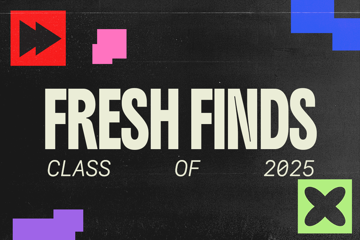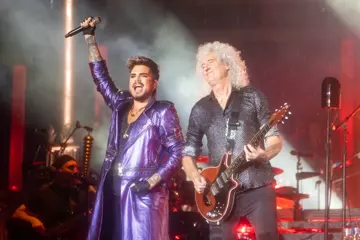 Taylor Swift
Taylor SwiftOf the 1.15 million Australians who cancelled their subscriptions to video streaming services between January and March 2023, 44 percent said it was to save money because of cost of living, according to research firm Kantor.
However pulling their subs doesn’t seem to be the case so far with music streamers. In fact, the arrival of TikTok’s new streaming service, TikTok Music, could lead to a boom. Its game-changing mix of streaming and social media is tipped to wave in a new second generation of music streaming services and transform TikTok’s China-based parent company ByteDance into a more powerful global player than it is already. Australia is one of five countries where TikTok Music has been introduced (in beta mode) alongside Singapore, Brazil, Indonesia and Mexico.
Figures from the last few years have shown how Australians’ huge appetite for consuming music has shown a marked tendency to pay for streaming. In mid-2021, when audio streaming subs had reached 13.5 million (up 13 percent from a year before) over half were paid subscriptions, compared to 42 percent in 2020.
By end of 2022, when the Australian recorded music industry hit its highest figure in 16 years (valued at $609.6 million), music streaming made up 67.4 percent of the share and was worth $410.7 million, up an 8.9 percent growth from the year before.
Don't miss a beat with our FREE daily newsletter
The figures are expected to keep soaring even as subscription prices rise. “Our price increases have had very little impact on our subscriber growth,” said Spotify CEO Daniel Ek. “We expect it to grow 30 percent this year. Obviously music is undervalued and streaming services have more pricing power than thought.”
From September, the price of a Premium Individual subscription in Australia goes from $11.99 a month to $12.99.
Record companies too have long been pushing for services to up their subs charges. “We see these initial price increases as an encouraging start,” said Warner Music CEO Robert Kyncl. “There’s no evidence that the services are experiencing elevated levels of customer churn. We believe the market will bear further price increases in the future, and we’re expecting that they’ll arrive on a more regular cadence than in the past.”
Kyncl was speaking after Warner announced its earnings for its fiscal Q3 (calendar Q2) 2023, which ended June 30, and were up by 9.9 percent year on year (YoY) to US$1.564 billion (AU$2.42 billion)
Streaming revenue grew 7.3 percent to $822 million in that quarter. Warner indicated that the recent streaming pricing hikes would show significantly in fiscal 2024, which for Warner begins on October 1, 2023.
Universal Music Group’s Q2 earnings went up 10 percent to €2.080 billion (AU$3.5 billion), of which ad-supported and subscription streaming revenue grew 11 percent YoY to €1.426 billion ($2.40 billion). The money from streaming subscriptions alone mounted 13 percent YoY to €1.068 billion ($1.79 billion).
Sony Music Entertainment’s revenue rose 16 percent to ¥358.2 billion ($3.87 billion) for the fiscal quarter which ended June 30. Streaming made up ¥164.89 billion ($3.87 million), an 18.52 percent YoY hike.
Being Immune
Statistics show that in the current cost crisis, Australians aged between 18 and 29 years old have cut back on meals, petrol, food takeaway deliveries and some types of entertainment. Earlier this year, the music industry had a wake-up call when two of the biggest festivals failed to draw usual numbers – Bluesfest from 100,000 to 70,000, and Splendour In The Grass from 50,000 to 35,000.
So why is music streaming immune so far? The answer may be in the profile of the Australian music streamer by researcher Roy Morgan in June 2020. “People who stream music online are more likely than the average Australian to be young, tech savvy and ready to spend,” stated the report. “The quintessential Australian streamer is a young woman under 35 years of age and likely to be in full-time white collar employment. She’s likely to be a ‘big spender’ and a ‘Metrotech’.”
Metrotechs are “socially aware, successful, career focused, culturally diverse as well as trend and tech focused. They are committed experience seekers, willing to spend big on the best of city life and thrive on being out and about in the world.”
The Metrotechs most likely to stream music are in the High Life, Fit & Fab and Academic Optimists categories.
According to AppMagic, Spotify was the most downloaded music service app in Australia with 23.8 million downloads by January 2022, and responsible for almost half of Australian consumers who spent money on digital music content. Second was YouTube Music with 8.7 million downloads, and SoundCloud Music at third with 7.6 million downloads.
The Present State Of Music Streaming
Spotify, Apple Music, Amazon Music, YouTube Music and Deezer upped their subscription prices in the past 18 months. The latest was Tidal on August 1. Most reported that it did not slow fans signing up.
Spotify
The Swede did better than its own executives or financial markets expected in its latest postings in July. Premium subscribers grew 17 percent YoY to 220 million, beating its prediction of 217 million. While it anticipated that the number of MAUs (monthly active users) would make it to 530 million, in reality it jumped by 27 percent from 2022 to 551 million.
Spotify expects premium subscribers to reach 224 million in Q3 (the three months from July to September) and MAUs to grow to 572 million. It generated US$2.9 billion (AU$4.5 billion) in revenue in the first quarter of 2023.
Apple Music
Apple Music last revealed its subscription figures in June 2019, when it was at 60 million globally. But that hasn’t stopped music associations and app measurement firms from trying to crunch numbers their way. The Business of Apps put the June 2022 figure at 88 million. The National Music Publishers Association used its data to claim Apple Music had 32.6 million payers in the U.S, second to Spotify’s 44.4 million.
US investment firm JP Morgan suggested Apple Music will reach 110 million payers by 2025 and be worth US$7 billion (AU$10.8 billion) a year.
Amazon Music
Last year Amazon Music announced it grew subs numbers by 25 percent year-over-year to reach the 55 million mark, and hit 68 million this year. It generated US$1.3 billion (AU$2 billion) in revenue in 2022’s fourth quarter. Around this time, Amazon Prime’s two million Australian subscribers got Amazon Music’s full music and podcast library for no extra cost, giving them 100 million titles.
Globally Amazon Music is regarded as third largest streaming player, with a 13.75 percent market share, to Spotify’s 33.37 percent and Apple Music’s 17.80 percent.
Tencent Music
China’s biggest online music platform company announced it arrived at 99.4 million subscribers in June 2023, up 20 percent from the previous 12 months. That gives it a 13.39 percent share in the global music streaming market in terms of subscribers. Revenues grew by 37.2 percent year-on-year to RMB 2.89 billion (AU$622.7 million), a new record for TM. However MAUs were down to 592 million at the end of the first quarter this year, compared with 636 million at the end of the same quarter last year.
YouTube Music
YouTube Music’s last figures were in November 2022, when it reached 50 million subscribers (up 20 percent from previous year), giving it a market share of 10.11 percent in the global music streaming subscribers. Launched in Australia in 2018, it was second most downloaded streaming service app here with 8.7 million boot-ups last year.
It’s retained fan loyalty with features as exclusive concerts, TV and radio sessions, meets where they can watch together, “afterparties” for when an act launches a video or song, and recently, live lyrics. YouTube Music generated US$2.5 billion (AU$3.8 billion) in revenue in the fourth quarter of 2022.
The Future Of Music Streaming
In 2023, nearly 120,000 tracks are being uploaded daily to streaming services, up from the 100,000 added each day in 2022.
Two overseas reports in recent weeks have substantiated the rosy future of music streaming. Persistence Market Research expected the global music streaming market to grow from US$30.42 billion (AU$47.2 billion) in 2022 to reach US$124.68 billion (AU$193.7 billion) by 2033, escalating at a compound annual growth rate (CAGR) of 13.8 percent between 2023 and 2033.
It attributed the continued growing technology that made music streaming remain a great experience. These included the widespread availability of high-speed internet and affordable data plans, seamless movements between devices, greater adoption of smartphones that allowed “music on the go”, and innovations in audio compression and streaming.
Finance powerhouse Goldman Sachs adjusted its forecast for global revenue for recorded music in 2023. It now puts the growth rate at 7.5 percent instead of 7.3 percent. There would be a compound annual growth rate of 8.6 percent for 2023 to 2030. Streaming would be strong fuel for this growth, itself already pegged at a growing rate of 11 percent.
One would be the growing streaming subscription prices. Goldman Sachs said, “We believe that such price increases are not just a one-off, and we would expect the industry to work towards implementing price increases on a recurring basis, especially in an environment of higher inflation.”
The other was how music streaming services have learned, from the gaming sector, that making money out of “superfans” was a $4 billion opportunity. Right from the start, they charged users a flat monthly fee because they assumed they all had a similar level of engagement. That proved not true because the greater intensity of their relationship, the more they would pay plenty for exclusive and personalised content.















